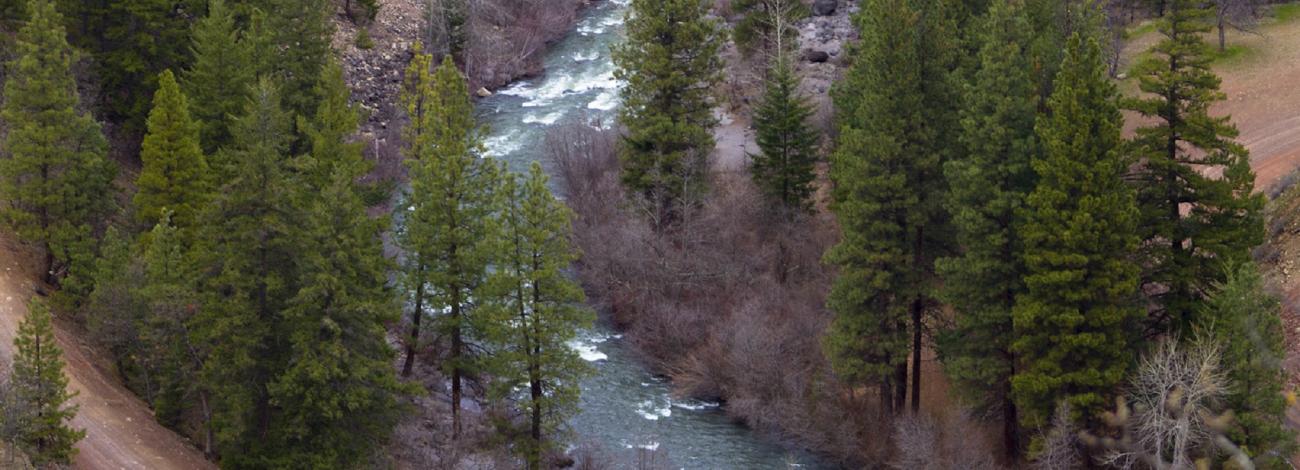
Lower White River Wilderness Area
The United States Congress designated the Lower White River Wilderness in 2009 and it now has a total of 2,806 acres. All of this wilderness is located in Oregon and is managed by the Bureau of Land Management (BLM) and the U.S. Forest Service.
The White River rises in the high Cascades in western Wasco County, in the Mount Hood National Forest on the southeast flank of Mount Hood. The headwaters are just below White River Glacier in White River Canyon. Additions to the Mount Hood Wilderness protect upper portions of the river, while the Lower White River Wilderness, southeast of the majestic Mount Hood Wilderness and east of Highway 26, protect a segment of lower White River stretch.
Be sure to contact the BLM's Prineville District or the Mt. Hood National Forest for the latest conditions and access to the spectacular Lower White River Wilderness Area!
- Directions
-
The Lower White River rises in the high Cascades in western Wasco County, in the Mount Hood National Forest on the southeast side of Mount Hood. The headwaters are just below White River Glacier in White River Canyon.
Mount Hood Wilderness protects upper portions of the river, while the 2,809-acre Lower White River Wilderness, southeast of the Mount Hood Wilderness and east of highway 26, provides a buffer for a lower segment of the river. There are no maintained trails within Lower White River Wilderness but the Keeps Mill Campground is located just west of the Lower White River Wilderness.
From Dufur, OR follow US-197 south to OR-216 W travel past the forest boundary and through a small section of the Warm Springs Indian Reservation to Forest Road 2120. Follow 2120 north to the Keeps Mill Campground is located along the Wild and Scenic White River just west of the Lower White River Wilderness boundary.
A Rock Creek Reservoir, Post Point map is available for download from the U.S. Forest Service topo maps site.
- Know Before You Go
-
Visitors can help in protecting this fragile ecosystem by adequately planning and by arriving prepared! Knowledge of the area, weather, terrain, and common sense can help to ensure you have safe, fun, and memorable trip to the wild. Trail junctions are generally unsigned, so you should carry a map and a compass. And always be sure to bring your ten essentials!
- Management Background
-
The Lower White River Wilderness is part of the 110 million acre National Wilderness Preservation System. This System of lands provides clean air, water, and habitat critical for rare and endangered plants and animals. In wilderness, you can enjoy challenging recreational activities like hiking, backpacking, climbing, kayaking, canoeing, rafting, horse packing, bird watching, stargazing, and extraordinary opportunities for solitude. You play an important role in helping to "secure for the American people of present and future generations the benefits of an enduring resource of wilderness" as called for by the Congress of the United States through the Wilderness Act of 1964. Please use Leave No Trace techniques when visiting the Lower White River Wilderness to ensure protection of this unique area.
General Wilderness Prohibitions
Motorized equipment and equipment used for mechanical transport is generally prohibited on all federal lands designated as wilderness. This includes the use of motor vehicles, motorboats, motorized equipment, bicycles, hang gliders, wagons, carts, portage wheels, and the landing of aircraft including helicopters, unless provided for in specific legislation.
Bureau of Land Management Information
Unless otherwise specified, no motorized equipment or mechanical transport, with the exception of wheelchairs, is allowed. This is generally true for all federal lands managed as designated wilderness.
U.S. Forest Service Information
In a few areas some exceptions allowing the use of motorized equipment or mechanical transport are described in the special regulations in effect for a specific area. Contact the Forest Service office for more specific information.
These general prohibitions have been implemented for all national forest wildernesses in order to implement the provisions of the Wilderness Act of 1964. The Wilderness Act requires management of human-caused impacts and protection of the area's wilderness character to insure that it is "unimpaired for the future use and enjoyment as wilderness." Use of the equipment listed as prohibited in wilderness is inconsistent with the provision in the Wilderness Act which mandates opportunities for solitude or primitive recreation and that wilderness is a place that is in contrast with areas where people and their works are dominant.
